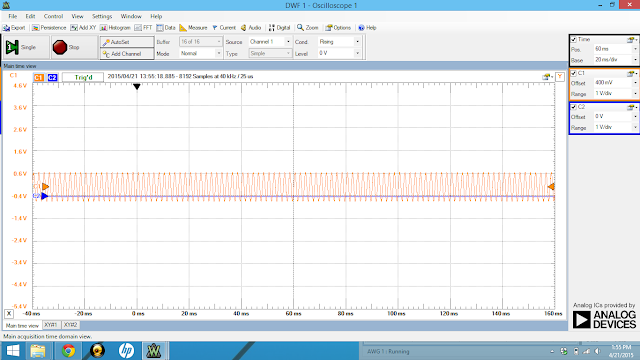 |
| This is all three of the circuits built on one bread board, so that each circuit could be looked at one after another with ease. This is to calculate the voltage of the circuit |
 |
| This is the same circuit only in this case the frequency is 1K Hz. |
 |
| This is all three of the circuits built on one bread board, so that each circuit could be looked at one after another with ease. This is to calculate the voltage of the circuit |
 |
| This is the same circuit only in this case the frequency is 1K Hz. |
 |
| This circuit is underdamped. Even though on the previous screen we say that it is over damped. |
 |
| This is the prelab. Though it does not include the equations for s1 and s2. The equation for underdamped i(t) = e^(-at)(B1coswt+b2sinwt) |
 |
| This graph shows the underdamped response. |
 |
| This circuit uses a capacitor with an inverting op amp. |
 |
| This is the graph of the output voltage at 1kHz frequency. You can see that the max is approximately 1.22 V. There is a small amount of excess noise, but the voltage is very consistent. |
 |
| When the frequency is 2kHz, there appears to be a lot more noise. This has to do with the increase in amplitude and in increase in frequency. |
 |
| This a very neat graph at 500Hz. It looks very boring and simple and it has a small amount of voltage. |
 |
| Recall: this is a diagnostic of an op amp. It will simply mirror what is put into it and what comes out as long as it does not exceed the power that is supplied to the op amp. |
 |
| This is a practice problem to demonstrate the voltage produced by the op amp. Recognizing that there is no voltage on either input and using nodal analysis and KCL. |
 |
| This is the actual Circuit. |